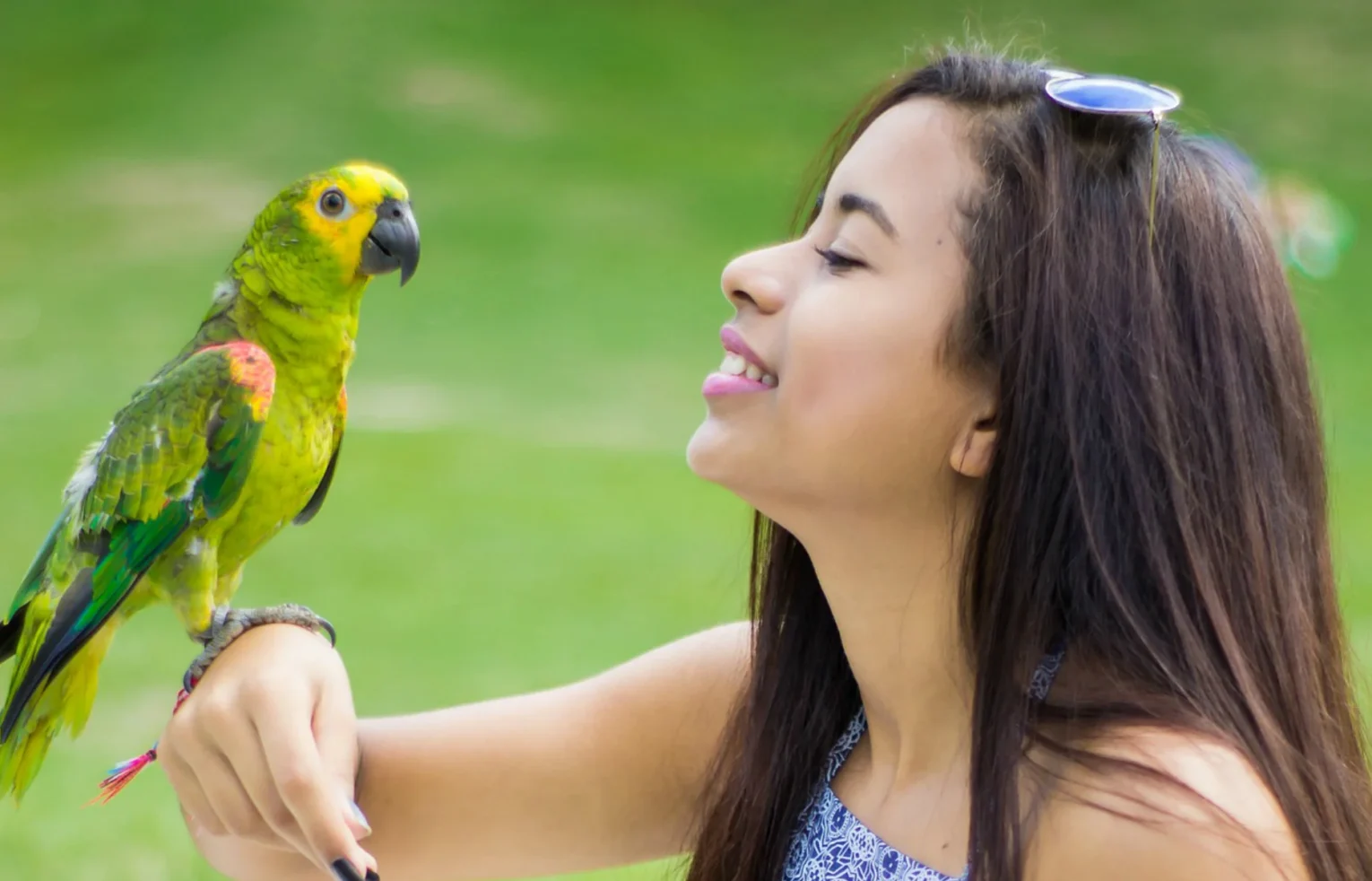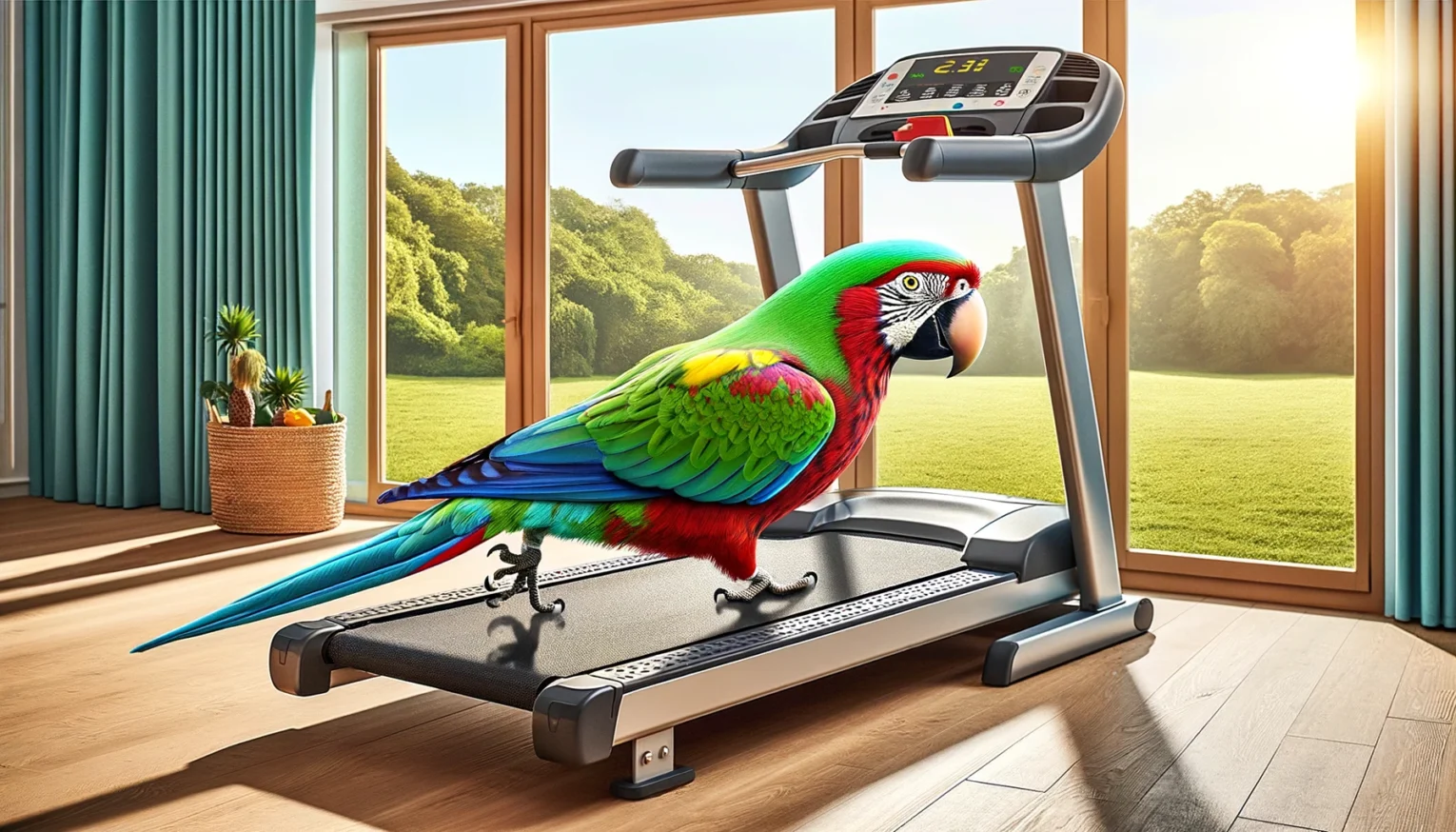
ust like humans, parrots benefit greatly from regular exercise to maintain their physical and mental health. A morning workout routine can help your parrot stay fit, prevent obesity, and provide essential mental stimulation. Establishing a consistent exercise regimen not only improves your parrot’s well-being but also strengthens the bond between you and your feathered friend. This guide provides practical tips and exercises for creating an effective morning workout routine for your parrot.
The Importance of Exercise for Parrots
Exercise is crucial for parrots for several reasons. It helps maintain a healthy weight, reduces the risk of obesity-related illnesses, and promotes cardiovascular health. Regular physical activity also strengthens muscles and improves coordination. Mental stimulation is another key benefit, as exercise engages your parrot’s mind, preventing boredom and associated behavioral problems such as feather plucking and excessive screaming. By incorporating exercise into your parrot’s daily routine, you can ensure they lead a happier and healthier life.
Setting Up a Safe Exercise Environment
Creating a safe environment for your parrot’s morning workout is the first step. Ensure that the area where your parrot will exercise is free from hazards such as sharp objects, toxic plants, and open windows or doors. Secure any items that could be knocked over or chewed on. If you are using a play gym or stand, make sure it is stable and appropriately sized for your parrot. Supervise your parrot during exercise to prevent accidents and ensure their safety.
Types of Exercises for Parrots
- Flying and Flapping: Flying is one of the best forms of exercise for parrots. If your parrot’s wings are not clipped, encourage them to fly short distances within a safe, enclosed space. For parrots with clipped wings, you can encourage flapping by gently lifting them and allowing them to flap their wings while being supported. This helps strengthen their wing muscles and promotes cardiovascular health.
- Climbing and Perching: Parrots are natural climbers, and providing opportunities for climbing can be a great way to exercise. Use ladders, ropes, and branches to create an engaging climbing environment. Ensure that perches are of various sizes and textures to promote foot health and dexterity. Climbing helps strengthen leg and core muscles and improves balance and coordination.
- Foraging Activities: Foraging is an excellent way to combine physical exercise with mental stimulation. Hide your parrot’s favorite treats in foraging toys or among safe, natural materials like shredded paper or leaves. Encourage your parrot to search for and retrieve the treats. This activity mimics natural behaviors and keeps your parrot engaged and active.
- Interactive Play: Engage your parrot in interactive play using toys such as balls, bells, and puzzle toys. Teach your parrot to fetch, roll a ball, or solve a simple puzzle to get a treat. Interactive play strengthens your bond with your parrot and provides both physical and mental exercise.
- Training Sessions: Incorporate short training sessions into your morning routine. Teach your parrot new tricks or reinforce existing ones. Use positive reinforcement techniques, such as offering treats and praise, to encourage your parrot. Training sessions are mentally stimulating and provide a structured way for your parrot to exercise.
Creating a Morning Routine
Establishing a consistent morning workout routine can help your parrot look forward to exercise and make it a regular part of their day. Start with a warm-up session by allowing your parrot to stretch and flap their wings. Follow with a mix of climbing, flying, and foraging activities to keep the workout varied and engaging. End with a cool-down period, allowing your parrot to relax and rest. Aim for at least 30 minutes of exercise each morning, adjusting the duration and intensity based on your parrot’s age, species, and fitness level.
Monitoring Your Parrot’s Health
Regular exercise is beneficial, but it’s important to monitor your parrot’s health and adjust the routine as needed. Watch for signs of fatigue or overexertion, such as heavy breathing or reluctance to participate. Ensure your parrot stays hydrated by providing fresh water before and after exercise. Consult your avian veterinarian regularly to ensure your parrot is in good health and to discuss any concerns about their exercise routine.

How to Keep Your Parrot Healthy?
Keeping your parrot healthy involves a combination of proper diet, regular veterinary care, and a stimulating environment. Here are key steps:
Balanced Diet: Provide a balanced diet that includes high-quality pellets, fresh fruits, vegetables, and a limited amount of seeds. Avoid foods that are toxic to parrots, such as chocolate, caffeine, and avocado.
Clean Water: Ensure your parrot has access to clean, fresh water at all times. Change the water daily and clean the water dish regularly to prevent bacterial growth.
Regular Veterinary Check-ups: Schedule annual check-ups with an avian veterinarian to monitor your parrot’s health. Regular blood tests, fecal exams, and physical exams can help detect and prevent health issues.
Clean Environment: Keep your parrot’s cage and play areas clean. Regularly clean perches, toys, and cage bars to prevent the build-up of bacteria and fungi.
Mental Stimulation: Provide a variety of toys and activities to keep your parrot mentally stimulated. Rotate toys regularly to prevent boredom.
How Do I Keep My Bird Happy and Healthy?
A happy and healthy bird is one that is well-cared for both physically and emotionally. Here are some tips:
Social Interaction: Parrots are social animals and need regular interaction with their human companions. Spend quality time with your parrot daily through talking, playing, and training sessions.
Enrichment Activities: Provide enrichment activities such as foraging toys, puzzle toys, and interactive play to keep your bird engaged and mentally active.
Proper Sleep: Ensure your parrot gets enough sleep by providing a quiet, dark environment for 10-12 hours each night. Covering the cage or placing it in a quiet room can help.
Safe Space: Make sure your parrot’s living area is safe and free from hazards such as toxic plants, sharp objects, and other pets that could pose a threat.
Healthy Diet and Exercise: Maintain a balanced diet and provide opportunities for exercise to keep your bird physically healthy.
How Do I Exercise My Parrot?
Exercise is crucial for a parrot’s physical health and well-being. Here are ways to ensure your parrot gets enough exercise:
Out-of-Cage Time: Allow your parrot ample time outside the cage every day in a safe and supervised environment. This allows them to stretch their wings and explore.
Flying: Encourage flying, if safe to do so, within a secure indoor space. This is one of the best forms of exercise for parrots.
Climbing and Perching: Provide climbing structures and various perches of different sizes and textures to promote foot and leg exercise.
Interactive Toys: Use toys that encourage physical activity, such as swings, ropes, and ladders.
Training: Engage in training sessions that involve movement, such as step-up commands, recall training, and tricks. This not only provides exercise but also strengthens your bond with your parrot.
How Do You Keep a Parrot Happy?
Keeping a parrot happy involves fulfilling their social, emotional, and physical needs. Here’s how:
Attention and Interaction: Spend quality time with your parrot daily. Parrots thrive on social interaction, so talk to them, play games, and involve them in your daily activities.
Variety of Toys: Offer a variety of toys to prevent boredom. Parrots enjoy toys they can chew, shred, and manipulate. Rotate toys regularly to keep things interesting.
Environmental Enrichment: Create an enriching environment with branches, perches, and play areas. Consider placing the cage in a location where the parrot can observe household activities.
Training and Challenges: Engage your parrot in training sessions and provide challenges such as foraging opportunities. This keeps their mind active and provides a sense of accomplishment.
Socialization: If possible, allow your parrot to interact with other birds. Socialization with other birds can provide additional stimulation and companionship.
Feedback
To ensure the best care for your parrot, regularly assess their health and happiness by observing their behavior, physical condition, and overall demeanor. If you notice any changes or signs of distress, consult with an avian veterinarian. Keep learning and adapting your care routine based on your parrot’s needs and preferences.
By following these guidelines, you can help ensure that your parrot remains healthy, happy, and well-adjusted, contributing to a long and fulfilling life for your feathered friend.
